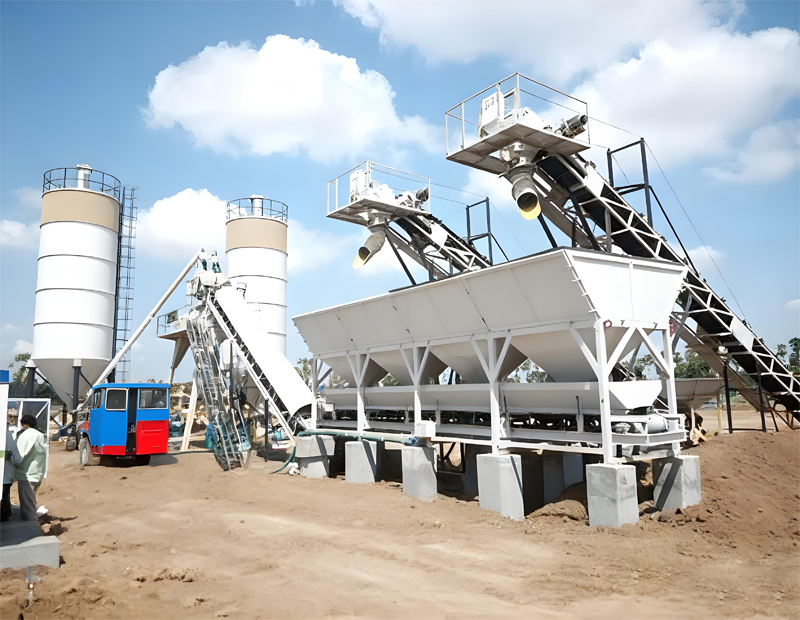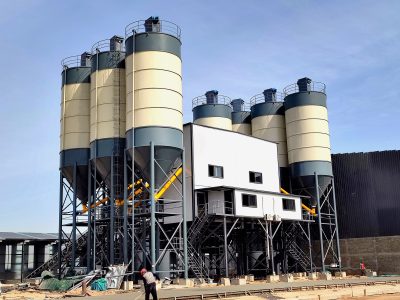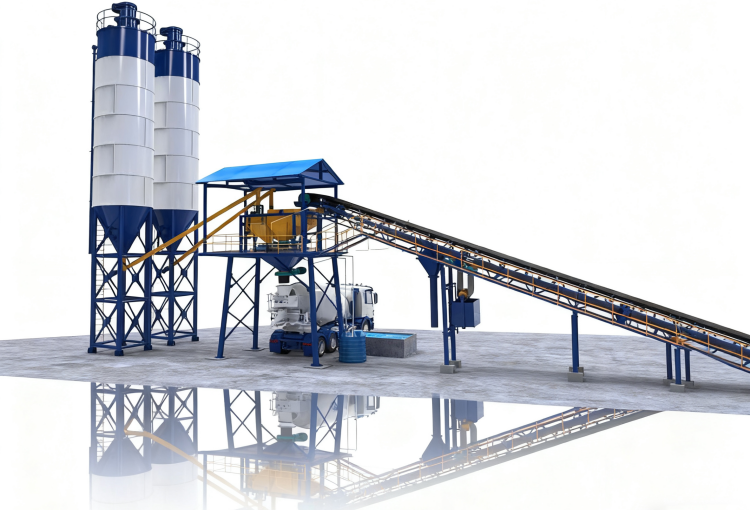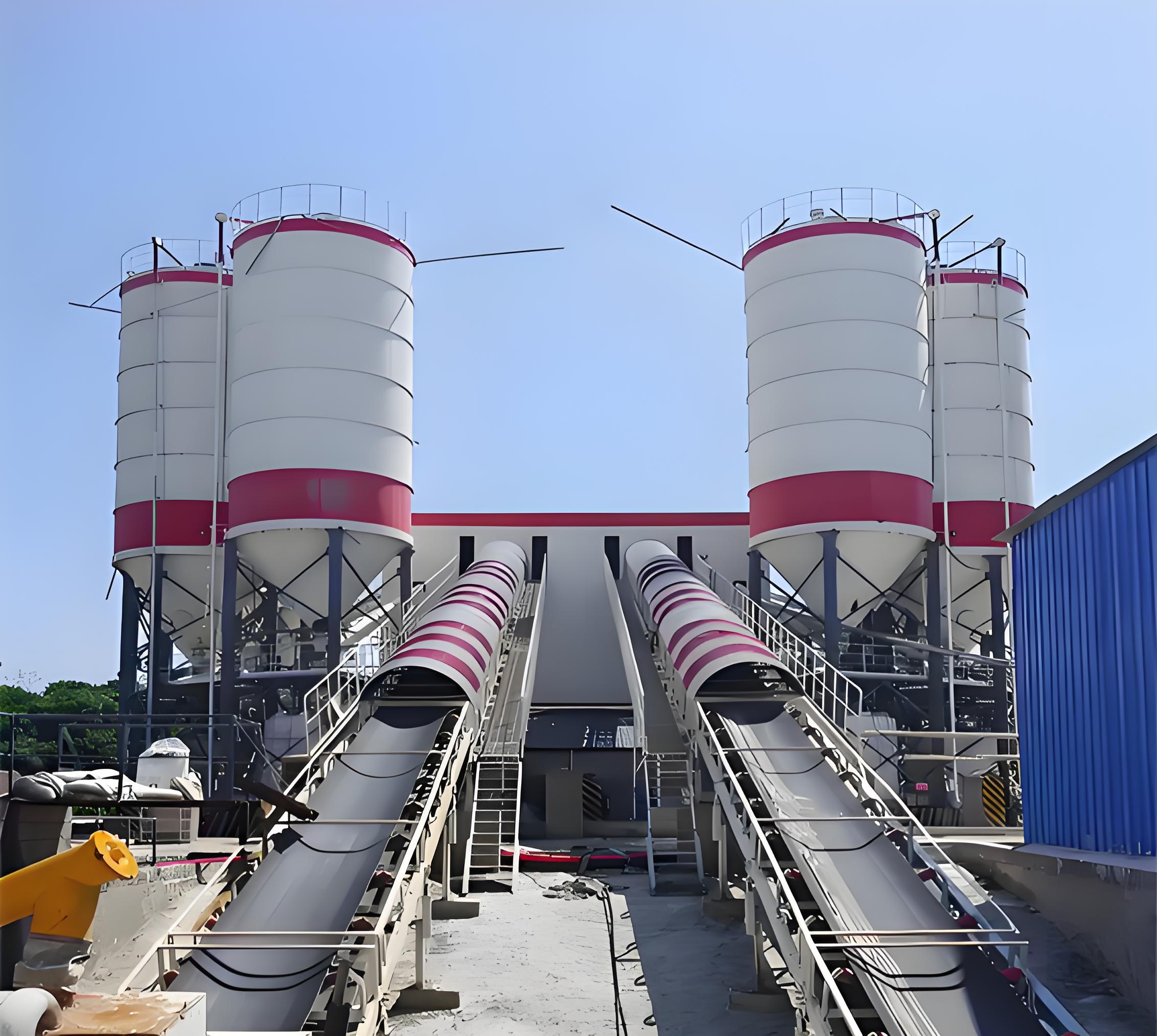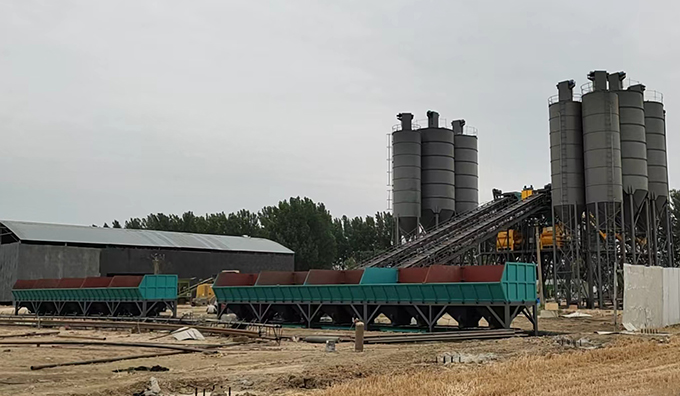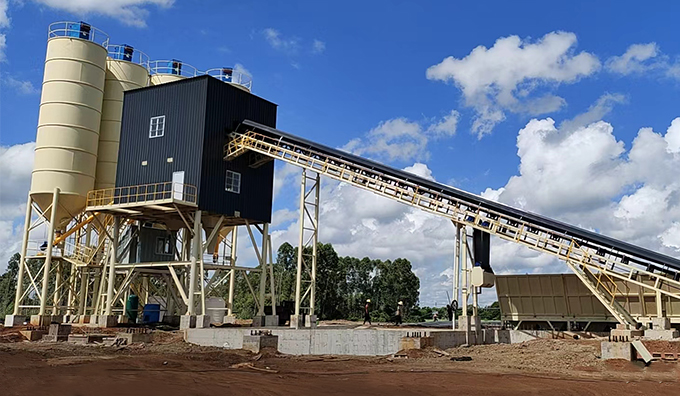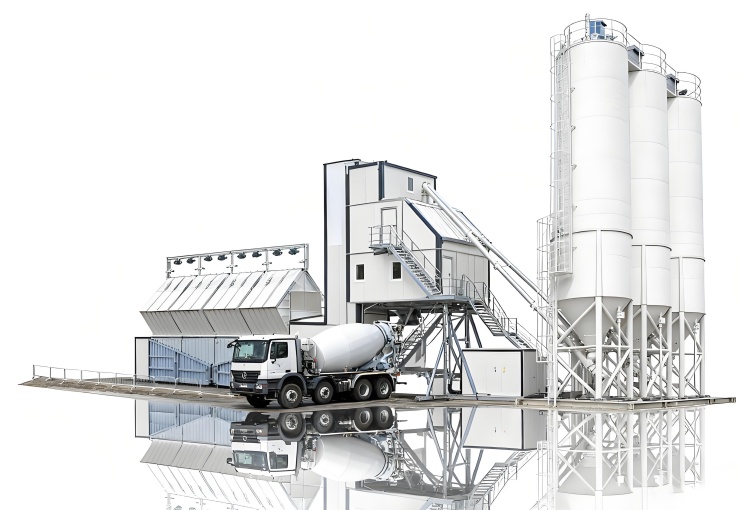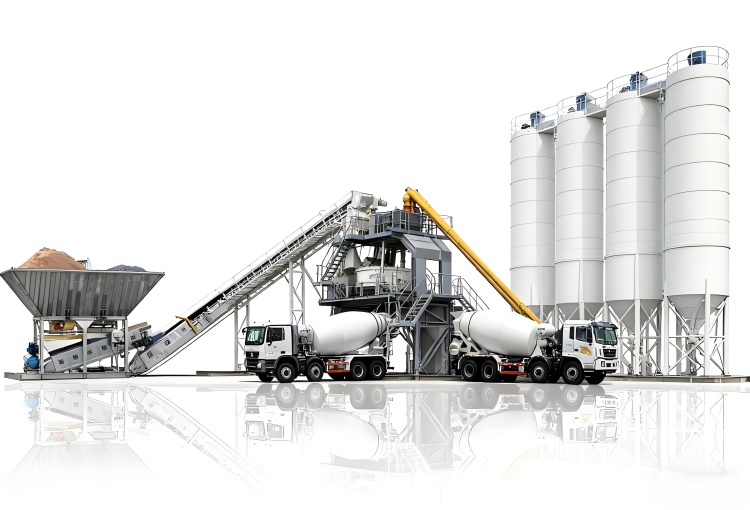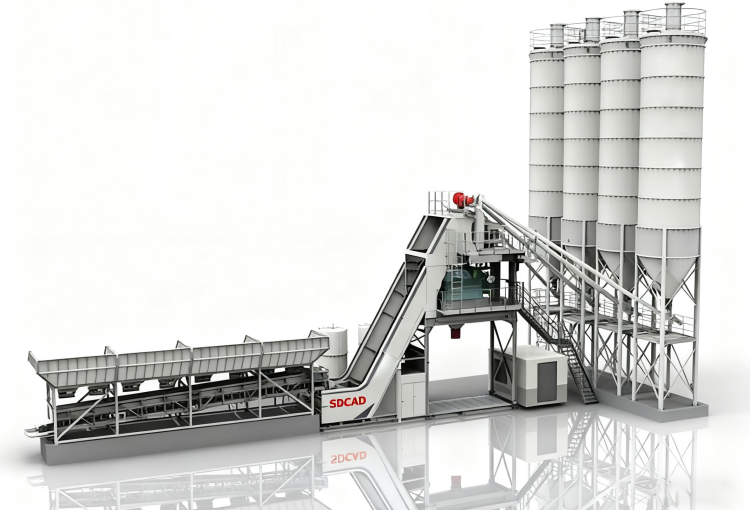In fact, the concrete industry is undergoing one of its most transformative periods in decades. Concrete batching plants—once heavily reliant on manual operations and traditional processes—are now embracing digital automation to meet rising demands for efficiency, quality, and sustainability. From reducing operational costs to enhancing project timelines, automation offers contractors, project managers, and decision-makers tangible advantages in daily operations.
This article explores the key drivers of this shift, the operational challenges faced in traditional plants, and provides detailed, actionable strategies for implementing automation in concrete batching plants.
Key Challenges in Traditional Concrete Batching Plants
Interestingly, despite the critical role of concrete in infrastructure, traditional batching operations often struggle with efficiency, quality control, and compliance. Major challenges include:
1. Operational Inefficiency
Manual batching processes, human-dependent measurements, and delayed reporting often result in inconsistencies in production and material usage. Projects frequently experience delays due to inaccurate batch weights, waiting times for approvals, or miscommunication between plant operators and construction sites.
2. Quality Variability
Concrete mix quality is extremely sensitive to proportioning, mixing time, and environmental factors such as humidity and temperature. Traditional plants lack real-time monitoring, leading to fluctuations in slump, compressive strength, and curing outcomes.
3. Safety and Environmental Concerns
Concrete plants deal with heavy machinery, dusty environments, and chemical additives. Limited automation increases exposure to workplace hazards and complicates compliance with environmental regulations.
4. Data Fragmentation
Without integrated digital systems, plant performance, maintenance schedules, and material usage data are scattered, making it difficult to analyze productivity trends, forecast maintenance, or implement cost-saving measures.
In essence, these challenges collectively reduce operational efficiency, inflate costs, and compromise the reliability of concrete supply for critical projects.
How Digital Automation Transforms Concrete Batching Plants
Automation introduces integrated digital solutions that streamline operations, improve safety, and provide actionable insights. Notably, the transformation is not limited to machinery—it encompasses process, data, and human resources.
1. Automated Material Handling and Batching
Digital automation systems use sensors, load cells, and programmable logic controllers (PLCs) to measure raw materials with extreme precision. Operators can control:
-
Cement, aggregates, water, and additive ratios in real time
-
Multiple batch sequences simultaneously
-
Inventory levels and automatic replenishment
Scenario: On a large highway project, automated batching reduced material wastage by 15%, cut labor costs, and ensured every batch met exact specifications.
2. Real-Time Monitoring and Data Analytics
Modern concrete batching plants leverage IoT-enabled sensors and dashboards to provide live updates on:
-
Mix consistency and slump
-
Machine operational status
-
Energy consumption and emissions
-
Maintenance alerts
These insights allow managers to prevent equipment failure, reduce downtime, and optimize energy use.
Operational Tip: Integrating SCADA systems can centralize plant control, linking multiple sites to a single dashboard for global oversight.
3. Process Optimization and Scheduling
Digital solutions can automatically optimize production schedules based on:
Scenario: A ready-mix concrete supplier serving multiple construction sites can coordinate deliveries, reducing idle trucks and waiting times by up to 20%.
4. Safety and Compliance Automation
Automated systems reduce human exposure to hazardous environments. Features include:
-
Emergency shutdown protocols
-
Dust suppression controls
-
Chemical handling alerts
-
Environmental compliance reporting
Scenario: A plant in North America reported zero workplace accidents over a year after implementing automated safety interlocks and real-time environmental monitoring.
5. Predictive Maintenance
IoT-enabled equipment collects performance data to predict component wear and schedule maintenance proactively. Benefits include:
-
Reducing unplanned downtime
-
Extending equipment lifespan
-
Optimizing maintenance budgets
Quantifiable Impact: Predictive maintenance can reduce repair costs by 25% and increase plant uptime by 12–15%.
Implementing Automation: Step-by-Step Operational Guide
Here’s a practical blueprint for plant managers and contractors to implement digital automation successfully:
Step 1: Conduct a Digital Readiness Assessment
Evaluate current plant capabilities, workforce skills, and production needs. Identify:
Tip: Start with high-impact areas like batching precision and monitoring before scaling to full plant automation.
Step 2: Select Automation Technology
Choose technology based on plant scale, production volume, and integration capability:
-
PLC-based control systems for batching precision
-
SCADA dashboards for centralized monitoring
-
IoT sensors for real-time data collection
-
Cloud-based analytics platforms for predictive insights
Cost-Benefit Analysis: Consider ROI, potential labor reduction, material savings, and improved project timelines.
Step 3: Upgrade Equipment
Integrate sensors, actuators, and digital control modules into existing machinery. Key upgrades include:
-
Load cells for aggregate and cement weighing
-
Conveyor speed controllers for optimized material flow
-
Automated water and additive dosing
Step 4: Staff Training and Process Redesign
Human factors are critical. Provide training on:
-
Digital interfaces
-
Data interpretation
-
Safety protocols
Redesign workflows to maximize the benefits of automation. For example, operators shift from manual batching to supervisory monitoring.
Step 5: Pilot Testing and Quality Verification
Run a controlled pilot to validate:
-
Batch accuracy
-
Mix quality
-
System reliability
Document findings and adjust system parameters as needed.
Step 6: Full-Scale Deployment
Scale automation across all lines, monitor KPIs, and refine processes. Use dashboards to track:
ROI Metrics: Measure reductions in waste, labor, and downtime. Track improvements in project completion timelines.
Advanced Strategies for Long-Term Optimization
Notably, automation is not a one-time upgrade. To extract maximum commercial value, consider:
1. Continuous Data-Driven Improvement
Regularly analyze collected data to identify inefficiencies. Implement machine learning algorithms to:
2. Integration with Supply Chain Systems
Connect plant automation with suppliers and logistics providers for:
3. Energy Efficiency Measures
Monitor energy consumption and implement automated adjustments to reduce power usage without compromising production.
Case Study: A plant reduced electricity costs by 18% after integrating automated motor speed control with real-time energy monitoring.
4. Sustainability and Environmental Reporting
Automation allows continuous tracking of emissions, dust levels, and water usage. Generate reports automatically to meet regulatory requirements and support ESG initiatives.
5. Hybrid Human-Digital Operations
While automation improves efficiency, human oversight ensures flexibility in complex scenarios. Encourage decision-making at critical junctions, while letting automation handle repetitive, high-precision tasks.
Quantifiable Benefits of Automated Concrete Batching Plants
-
Operational Efficiency: Batch cycles reduced by 15–25%
-
Cost Savings: Material and labor costs reduced by 10–20%
-
Quality Consistency: Slump and compressive strength variation reduced by 30–40%
-
Safety Improvement: Workplace incidents reduced to near zero
-
Sustainability Gains: Energy and water usage optimized, emissions reduced
Actionable Takeaways for Contractors and Project Managers
-
Start small: automate high-impact processes first
-
Invest in training to maximize ROI
-
Utilize real-time monitoring for quality control
-
Implement predictive maintenance to minimize downtime
-
Align automation strategy with sustainability and cost-reduction goals
Interestingly, integrating automation is not just about efficiency—it’s about creating a resilient, reliable, and scalable concrete supply chain that supports large-scale infrastructure projects worldwide.
Conclusion
Digital automation is no longer optional for concrete batching plants aiming to stay competitive. By leveraging integrated sensors, IoT systems, predictive analytics, and automated workflows, plants can significantly enhance efficiency, safety, and profitability. Contractors and project managers who adopt these technologies today are poised to gain a measurable advantage in project execution, cost control, and long-term operational excellence.

